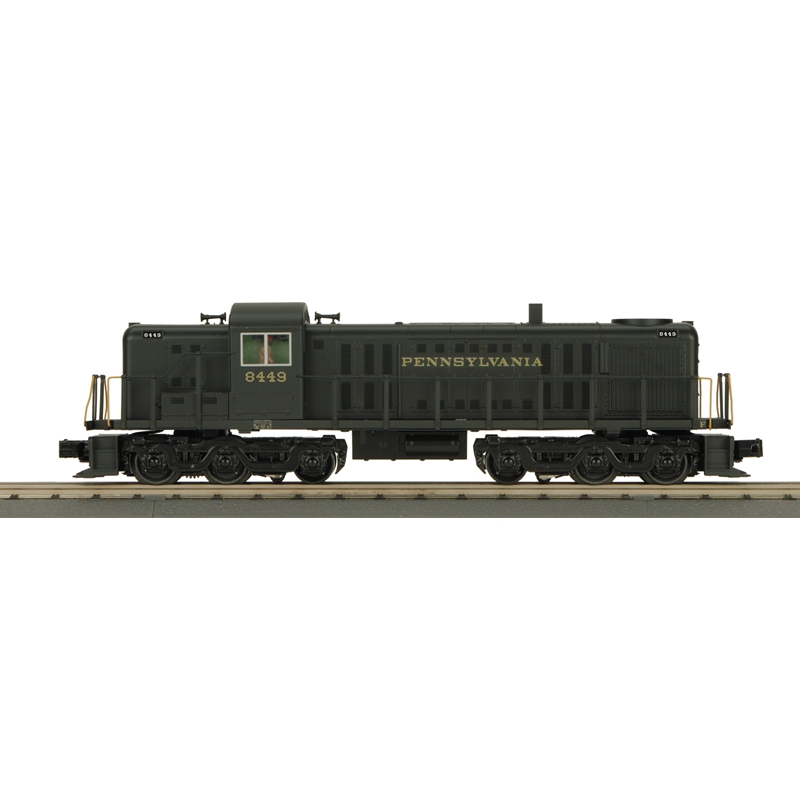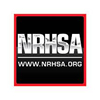MTH 30-21171-1 O Railking RSD-5 PS3 PRR
The American Locomotive Company pioneered the multi-purpose "road switcher" design in 1941 with its 1000 hp RS-1. Alco's designers added a second, shorter hood to a basic switcher to make room for a steam boiler for passenger train heat. The short hood also afforded the crew additional accident protection. Smoother-riding trucks made Alco's new design suitable for the higher road speeds that would be daunting in a typical switcher.
In 1946, Alco cataloged the first six-axle version of its road switcher, the RSC-2. Designed for operation on the lighter rail found on branch lines and short lines, the engine used two more axles to spread out its weight. The trucks were a so-called "A1A" configuration: the two end axles had traction motors while the middle wheels were unpowered idlers.
In 1951, the Chicago and North Western asked Alco to build a six-axle version of its RS-3, this time with all axles powered. The body and the 1600 hp Alco 244 prime mover were the same as used in the RS-3, but the additional traction motors gave the new model RSD-4 stronger low-speed performance. The longer trucks were both smooth-riding and more suitable for lighter rail. The design proved to be a winner, and a dozen railroads purchased the RSD-4 and its near-identical twin, the RSD-5, which sported an improved GE generator.
Did You Know?
While they were the first to be cataloged, the RSC-2s were not the first six-axle Alco RS locomotives. Back in World War II, the first two years of RS-1 production had gone to the military. The 13 units that had been delivered to American railroads were requisitioned from their owners and, along with 144 additional engines, were sent to Iran, Russia, and U.S. Army posts. These RS-1s were fitted with three-axle trucks to make them suitable for lighter rail on overseas roads. A group that plied the Trans-Iranian Railroad became known as "the diesels that saved Russia" because they brought in food and other supplies after the Luftwaffe had crippled Russian shipping. These engines later became the prototype for Russia's own early diesels.
- Intricately Detailed, Durable ABS Body
- Die-Cast Truck Sides, Pilots and Fuel Tank
- Metal Chassis
- Metal Handrails and Horn
- Authentic Paint Scheme
- Metal Wheels, Axles and Gears
- (2) Remote-Controlled Proto-Couplers
- Prototypical Rule 17 Lighting
- Directionally Controlled Constant Voltage LED Headlights
- (2) Precision Flywheel-Equipped Motors
- Operating ProtoSmoke Diesel Exhaust
- Onboard DCC/DCS Decoder
- Locomotive Speed Control In Scale MPH Increments
- 1:48 Scale Proportions
- Proto-Sound 3.0 With The Digital Command System Featuring Freight Yard Proto-Effects
- Unit Measures: 14 1/2” x 2 1/2” x 3 3/4”
- Operates On O-31 Curves
Diesel DCC Features
- F0 Head/Tail light
- F1 Bell
- F2 Horn
- F3 Start-up/Shut-down
- F4 PFA
- F5 Lights (except head/tail)
- F6 Master Volume
- F7 Front Coupler
- F8 Rear Coupler
- F9 Forward Signal
- F10 Reverse Signal
- F11 Grade Crossing
- F12 Smoke On/Off
- F13 Smoke Volume
- F14 Idle Sequence 3
- F15 Idle Sequence 2
- F16 Idle Sequence 1
- F17 Extended Start-up
- F18 Extended Shut-down
- F19 Rev Up
- F20 Rev Down
- F21 One Shot Doppler
- F22 Coupler Slack
- F23 Coupler Close
- F24 Single Horn Blast
- F25 Engine Sounds
- F26 Brake Sounds
- F27 Cab Chatter
- F28 Feature Reset







